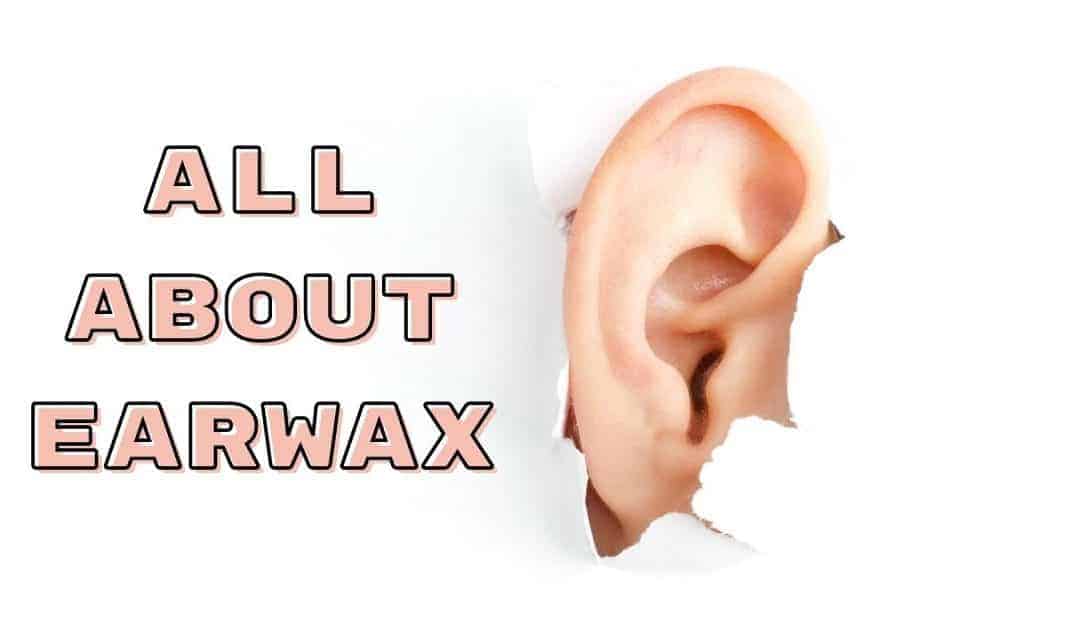Earwax is among the many things that our bodies produce. We are all familiar with earwax and incorporate its removal into our regular routines. But do you know what earwax is? Ear wax protects the ear canal by keeping it clean and preventing the entry of dust, debris, and microorganisms. Did you know it actually serves a purpose? And should you avoid using cotton swabs? Well, if you are curious, this article explores all things earwax!
What is Earwax?
Small amounts of earwax actually support the health of your ears. Integral to how we hear, the ears consist of:
- Outer Ear: the most visible (fleshy) part of the Ear, outer ear canal, and ear drum.
- Middle Ear: three connected bones known as the ossicles (among the tiniest bones in the body) and the eustachian tube.
- Inner Ear: cochlea – filled with fluid, thousands of hair cells, and auditory pathways leading to the brain.
The production of earwax, also known as cerumen, starts with the outer ear canal. Containing sweat glands, the outer Ear releases fatty secretions that travel down the ear canal. This movement is facilitated by jaw movement, produced when we talk, eat, laugh etc. The secretions absorb dead skin cells, dirt, hair, and other debris as it moves down the ear canal. This mixture is referred to as earwax.
Earwax is beneficial to the ears because it is part of the body’s natural cleaning process. It contains antibacterial properties, allowing it to collect and contain dirt and other hazardous substances. This prevents them from further entering the Ear and causing damage.
Earwax also helps keep the ears lubricated, preventing dryness and/or itchiness. Normally, earwax makes its way to the opening of the Ear, and after some time, it will flake off or wash away on its own. However, when earwax remains in the ears and accumulates, it requires removal. Excess wax can lead to blockages that may impair hearing and necessitate careful management to avoid complications. In severe cases, untreated ear issues can lead to complications that may require medical procedures such as neck surgery.
Impact of Excessive Earwax Buildup
Excessive earwax remaining in the ears can lead to ear wax blockage, which can be harmful. It can lead to experiencing various symptoms that are uncomfortable, including ear pain, which may indicate underlying health issues that require medical attention:
- Ears are plugged up
- Pain, aching, ringing
- Odor and/or discharge
- Difficulty hearing
- Dizziness
If earwax is not properly removed and stays in the Ear, it can cause:
- Ear infections: which can be caused by the accumulation of bacteria in the earwax
- Temporary hearing loss: earwax buildup in the ear canal blocks soundwaves from traveling to the inner Ear. This makes it difficult to then absorb and process sound information.
- Cerumen impaction: Excess wax may harden and create an impaction, causing discomfort and potentially leading to hearing loss.
It is important to know when and how to safely and effectively remove earwax to prevent discomfort, infections, and/or temporary hearing loss.
Tips for Earwax Removal
People typically clean their ears and remove earwax with a cotton swab. However, this strategy is not recommended because it can easily (and likely) push wax deeper into the Ear. This can impact the eardrum, causing irritation or infection, which can impact your hearing health. More effective ways to remove ear wax include:
Soften Earwax
This strategy uses substances intended to soften earwax which makes removal smoother. People can make their own solution (using ingredients like baby oil, olive oil, glycerin etc.), or purchase over the counter ear drops. This method involves placing drops of the solution into your ear, which is then draining or rinsing the ears out. Additionally, using a cloth or paper tissue to gently clean the outer ear canal can help maintain ear hygiene and prevent wax from hardening.
Ear Irrigation for Ear Canal
There are different ways to practice this method, but generally, ear irrigation consists of water or a saline solution to drain the ears. It works by simply tilting your head and placing drops of the solution into the Ear and, after a little bit of time, tilting your head in the other direction to drain the fluid and wax.
Seeing a Specialist for Earwax Blockage
If these methods do not work for you or symptoms are persisting, you should contact us for an appointment. Excess earwax can lead to hearing loss, discomfort, and other health concerns, so professional removal is important when it becomes impacted.
Additional Tips
In addition to safely removing earwax when necessary, some useful tips to follow are:
- Adequately dry out your ears after swimming to prevent infection
- For hearing aid wearers: earwax buildup can happen regularly, so be sure to regularly clean your device and your ears
- Do not use small items to remove ear wax, such as bobby pins, cotton swabs, stems, etc.
- If you experience consistent discomfort or pain in your ears, see a doctor as soon as possible. Earwax blockage can cause symptoms like pain and discomfort, and it is important to consult a healthcare provider for proper diagnosis and treatment.

